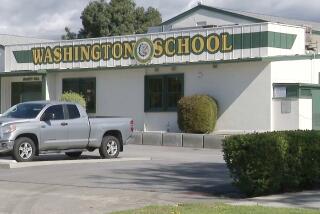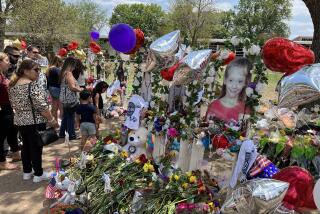Baltimore study links truancy and street violence
Before they fell victim to violence, students who were slain or shot had poor school attendance, according to data released Thursday by the Baltimore school system and health department.
Between 2003 and 2007, 115 youths in Baltimore were killed and 405 were victims of nonfatal shootings, health department figures show. The school system was able to retrieve attendance data going back to 1999 for 391 of the 520 victims. The health department pooled the data from the two agencies.
The youths were absent from school an average of 46 days annually, and more than two-thirds of them had been suspended or expelled at least once.
The data are intended to illustrate the public health implications of truancy and suspension as city schools chief Andres Alonso tries to get the community involved in improving Baltimore’s educational system. Alonso also is urging principals to find alternatives to suspension for nonviolent offenses to keep students off the streets.
“Many, many of our students end up as victims of homicides and shootings, and we see the correlation to the fact that they’re not in school,” Alonso told reporters Thursday. He said what was happening to those students was “a dereliction of duty” by the community.
The release of the information comes on the heels of several high-profile incidents of violence involving Baltimore’s schools and students, which prompted Alonso to issue a public call for community volunteers.
In the latest incident, a mother interrupted a class Thursday morning at Calverton Elementary/Middle School and started a fight with the teacher.
Calverton has been under lockdown twice in the last month because of shootings in the neighborhood, and on Sunday, two 13-year-old students allegedly broke into the school. One allegedly tried to rape a staff member who was there doing extra work.
Among the findings of the review, which examined the attendance files of 83 homicide victims and 308 nonfatal shooting victims:
* Youths who became victims of homicides and shootings attended an average of 105 days of school per academic year, an attendance rate of 70%. While an academic year has 180 days, the students were only enrolled for an average of 151 days, probably indicating that they were frequently moving between schools.
* Before the homicide or shooting, 261 victims -- 67% -- had been suspended or expelled at least once.
* Victims who were suspended or expelled had an average of 2.2 suspensions or expulsions per academic year. They missed an average of 14.6 days of school per year because of suspensions and expulsions.
“Problems with attendance, suspension and expulsion place youth at risk not only for school failure, but also for severe injury or death from violence,” wrote the city’s health commissioner, Dr. Joshua M. Sharfstein, in a letter to Alonso detailing his staff’s findings.
In the letter, Sharfstein said it was likely that the results were underestimates, in part because the review did not include suspensions that schools imposed but did not report to the system’s central office.
Sharfstein and Alonso said they were continuing to merge data from their two departments to show the broader implications of what happens -- or doesn’t happen -- in schools.
Alonso has faced criticism within the system for urging principals to find alternatives to suspension for nonviolent offenses. While he has been clear that schools must suspend students for violence, some have taken his guidance as a directive not to suspend at all.
But Police Commissioner Frederick H. Bealefeld III applauded Alonso’s efforts.
“When these kids are suspended or expelled, they don’t volunteer their time in a soup kitchen,” Bealefeld said. “They wait outside the school or just outside the school property and victimize the other kids. That is what they do. [Alonso] knows that, I know that, all the kids who go to the school know that.”
Bealefeld said police could help by stepping up truancy arrests and targeted juvenile arrests.
He said the findings of the review were consistent with what he saw in the streets.
“I am not surprised that bad kids don’t go to school,” he said. “I’m not surprised that the victims of homicides get in trouble in schools. I don’t think it is news, but what is newsworthy and what is a positive thing in this whole situation is Dr. Alonso’s commitment to fixing something that has problems.”
Next year, as principals have more control over their school budgets, Alonso has urged them to use their discretionary money to develop in-school suspension programs.
More to Read
Start your day right
Sign up for Essential California for news, features and recommendations from the L.A. Times and beyond in your inbox six days a week.
You may occasionally receive promotional content from the Los Angeles Times.






